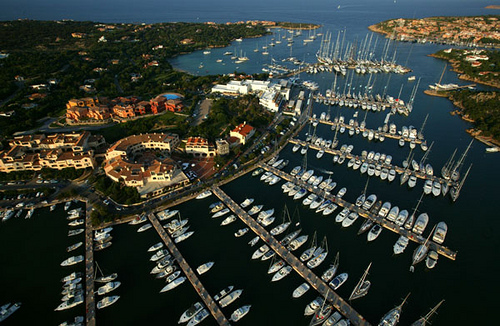
Porto Cervo Marina, Costa Smeralda by Diane Byrne
Where
Sardegna is Italy’s second largest island after Sicilia and sits to the west of continental Italy, at the latitude of Naples; it’s due south from the French island of Corsica. Sardegna is a beautiful island with a stunning coastline – both sandy and rocky, and a striking interior of mountains, pastures and rivers. One might expect the islanders to have a strong seafaring history with many seafood dishes. This is not the case here due to a long history of hostile invaders arriving by sea. The Sardinians were forced inland to defend themselves and became shepherds rather than fishermen. Their cuisine is meat based due to this pastoral history.
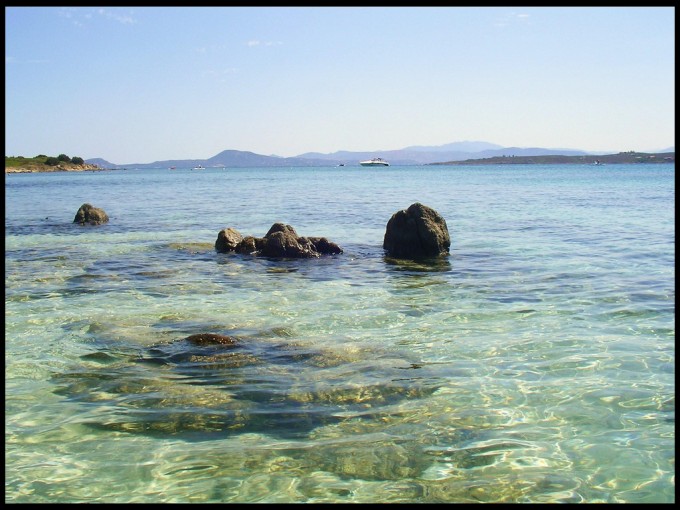
Sardegna by Valentina A
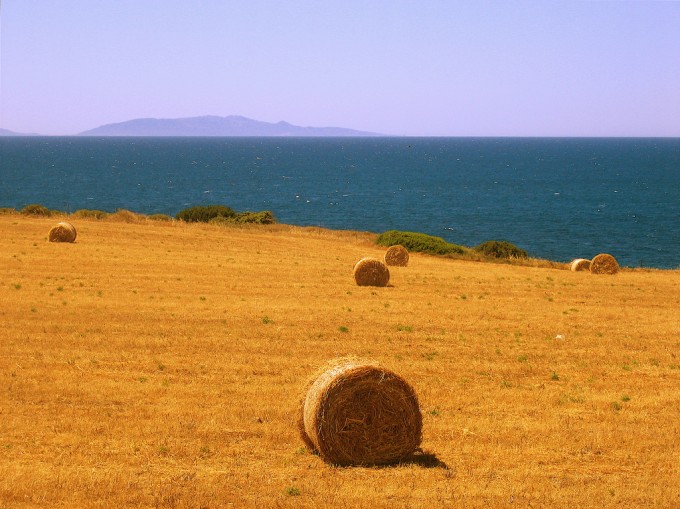
Sardinian countryside by Lino Gambella
Sardegna suffered from being cut off from the mainland with poverty and banditry but today it is dependent on the annual influx of tourists who come for the hospitality, food and scenery. The Sardinians speak a distinct language (as well as Italian) that is closely related to Latin. There are many dialects on the island including Catalàn (from Spain) and Gallurese, a dialect also spoken in nearby Corsica.
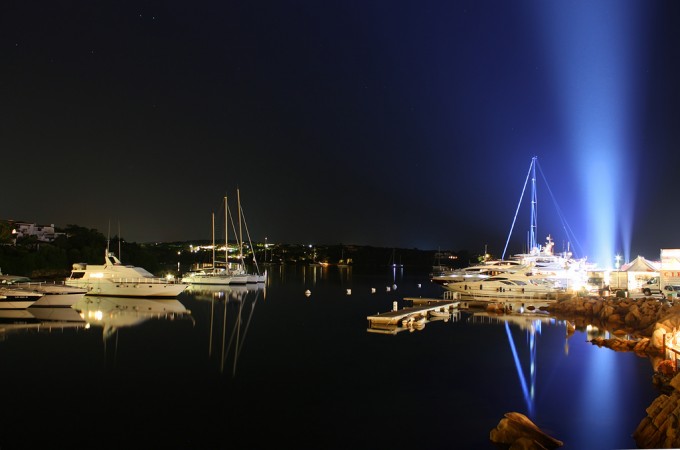
Porto Cervo Marina by Michele Anzidei
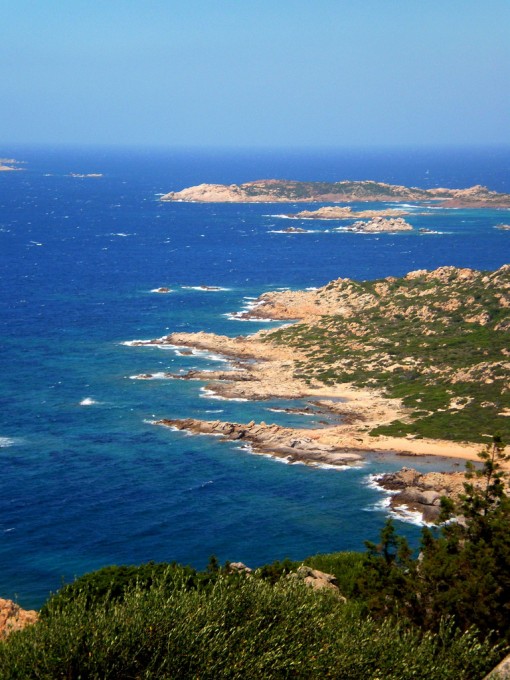
Maddalena Archipelago National Park by Cristiano Cani
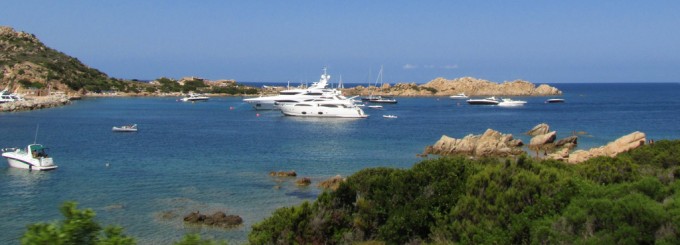
Maddalena Island by Michela Simoncini
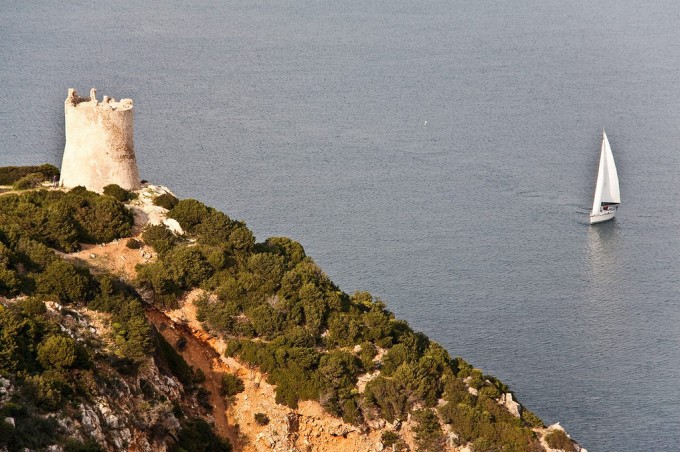
Alghero by Michele Soimi
What to See
The Costa Smeralda became a destination for the rich and beautiful when the Aga Khan made this strip of east coast famous. The island offers exclusive resorts with windsurfing, golf, tennis, and sailing (my favourites are at Porto Cervo). The Maddalena Archipelago (Arcipelago della Maddalena) is a national park with beautiful islands, including Maddalena Island. The west coast is mostly less built up and remains wilder and unspoiled. The coastal towns, such as Alghero, are full of character, with sea battlements and fortresses. In the interior, the towns are often built on hills overlooking the pastures that have made Sardegna’s sheep famous. Much of Sardegna is arid, with little rainfall in summer and is a natural habitat for the macchia mediterranea – the native plants that can survive with little rain. In spring, the mountains are covered in wildflowers.
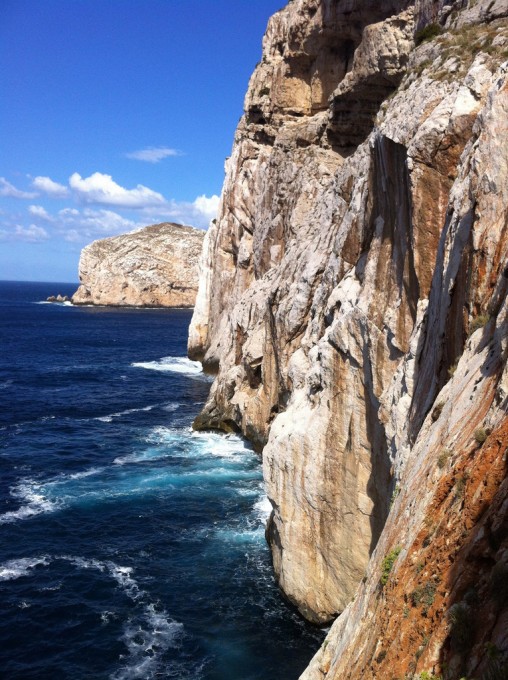
Neptune’s Cave by Jeff Mash
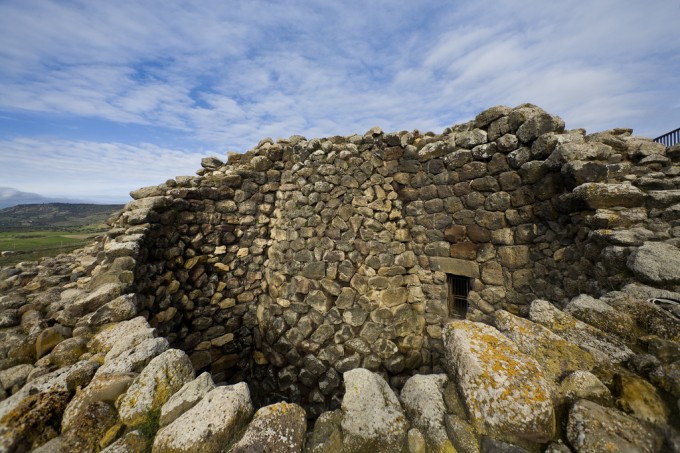
Barumini by Aurelio Candido
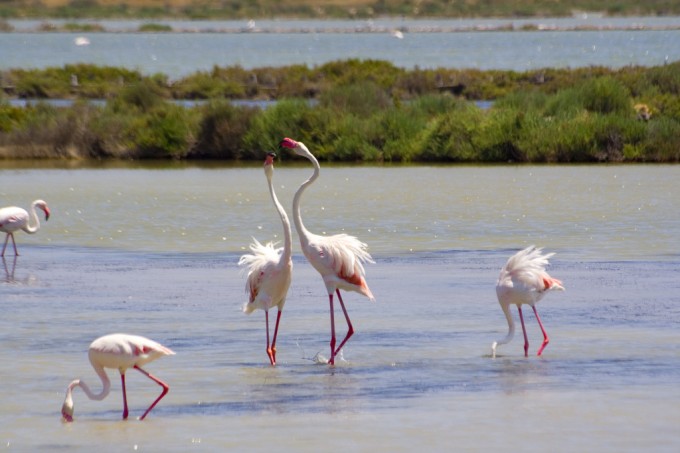
Flamingos by Stefano Sassu
Along the coastline near Alghero, Grotta di Nettuno (Neptune’s Cave ) is worth seeing, as is the sea view from Capo Caccia. Barumini has an interesting archaeological history and an 8th-century fortress. Another interesting place to visit is Castelsardo, a village with labyrinth-like streets and a 900 year old town centre. The village sits on a promontory overlooking the Golfo dell’Asinara (Gulf of Asinara). For more on Sardegna as a holiday destination, read here.
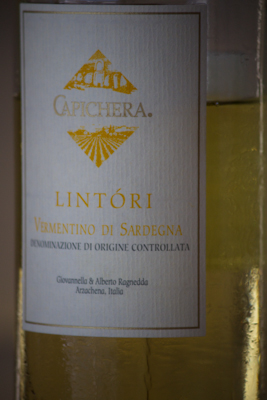
Vermentino di Sardegna by Capichera
In recent years, Sardegna’s winemaking has improved and there are now many fine wines being produced from areas on the island as diverse as Gallura in the north, where they make the wonderful white Vermentino di Gallura DOCG and the area in the south around the capital city, Cagliari, where DOC red Cannonau and white Moscato, Nasco and Malvasia are produced. The red made in the south-western corner of the island, is also a favourite.
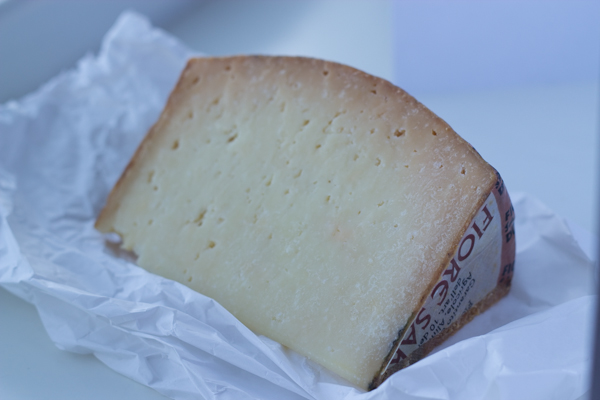
Fiore Sardo
With so much mountainous and pasture land, it’s no surprise that Sardegna is known both for its lamb and its excellent ewes’ milk cheeses. These include delicate ricotta and the traditional pressed curd cheeses, Fiore Sardo DOP and Pecorino Sardo DOP, which can be found both young and aged.
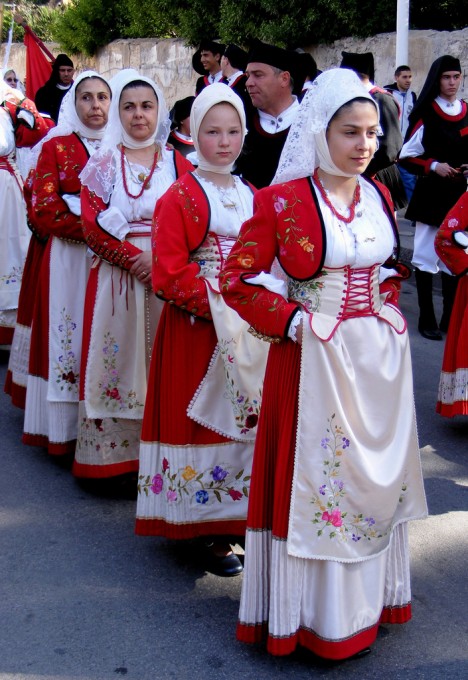
Traditional dress in Macomer by Gureu
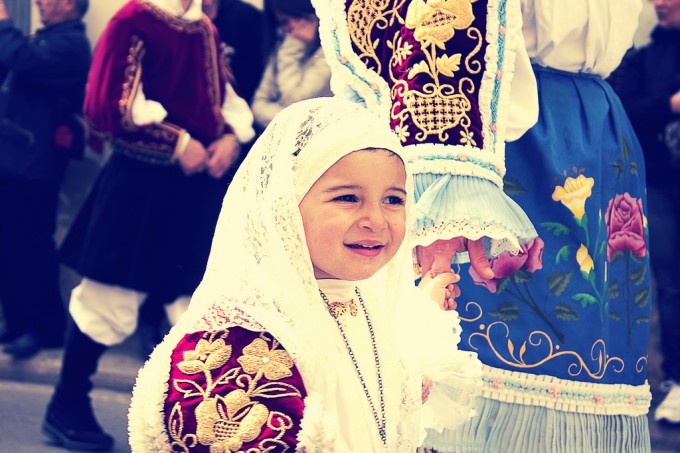
Traditional Sardinian dress by Andrea Cau
Sardegna is also known for the fine handiwork of its women, from lace to elaborately decorated cookies.
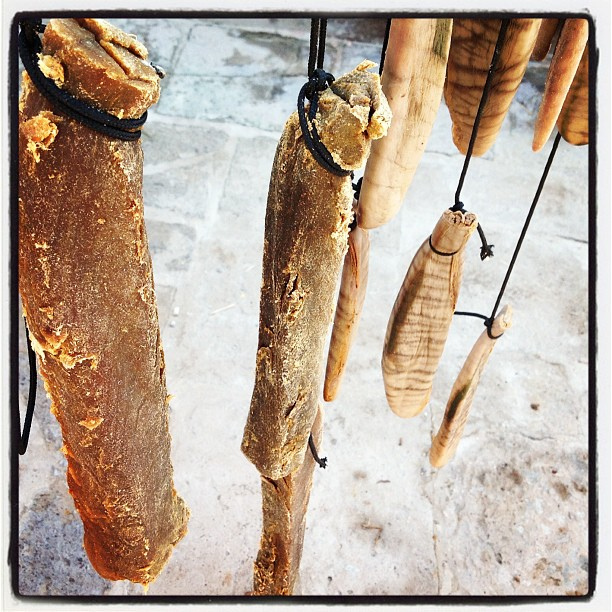
Bottarga by Manila B
Bring home: honey, carta musica (flatbread), Pecorino Sardo and Fiore Sardo DOP cheeses, bottarga (dried, pressed mullet or tuna roe), gattò / durke de mendul (almond brittle flavoured with orange zest and honey), durke de nuke (walnut and hazelnut brittle flavoured with orange zest and honey) and biscuits.
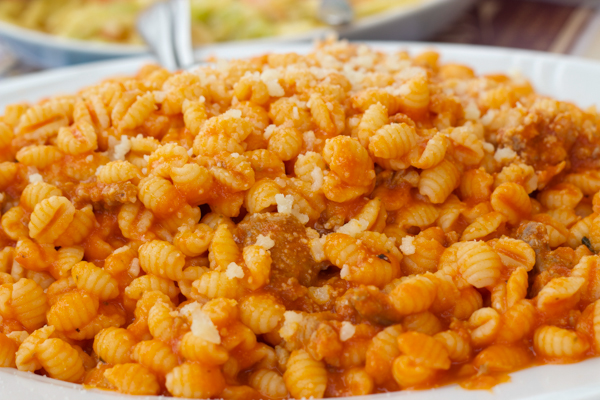
Mallorredos with sausage
The Larder
Sardegna is most famous for its lamb, kid and roast suckling pig, and for artichokes, small tomatoes, flat crispy bread (pane carasau or carta di musica, it was traditionally taken into the pastures by the shepherds because it never goes stale), lobsters, and bottarga. Fiore Sardo (a hard sheep’s cheese) is eaten young with bread and mature grated over saffron-flavoured pasta…..Sardegna is also rather infamously known for a cheese that acquires maggots as it ages (casu marzu). Cheese is an important part of the Sardegnan diet and there are many different types; it is sometimes served with honey, including the bitter corbezzolo – the Mediterranean bush known as the ‘strawberry tree’. Many other aromatic plants grow wild in Sardegna, including myrtle, thyme and mint, and they are often used in the cooking. Shepherds like to spit-roast lamb, kid and young pork with these herbs over wooden fires. Extra virgin olive oil is another important crop, with olive groves planted in many parts of the island. Vegetables, fruit, nuts and cereal crops also grow well here.
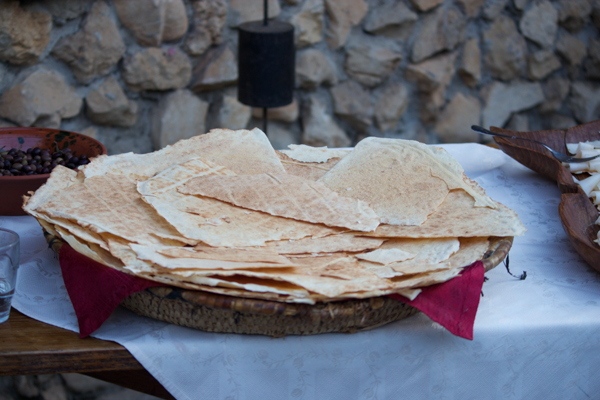
Pane Carasau
Sardinian cooking is rustic country style, with the ingredients allowed to speak for themselves. Salads are dressed simply with extra virgin olive oil and salt. There are many types of bread, specific to each area and eaten at different celebrations and feast days, as well as unique pasta shapes.
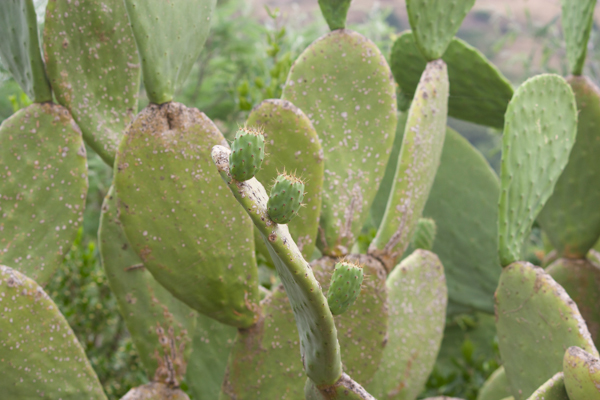
Cactus pears
Other typical ingredients include: fish, cheese (from sheep and cow’s milk), mouflon / muflone (wild sheep), bran, barley, semolina, chillies, artichokes, celery, radishes, peas, cardoons, aubergine, cauliflowers, saffron, rosemary, basil, garlic, sage, marjoram, thyme, bay, onions, dates, prickly pear, figs, oranges, lemons, melons, pomegranates, cherries, plums, chestnuts, hazelnuts and almonds.
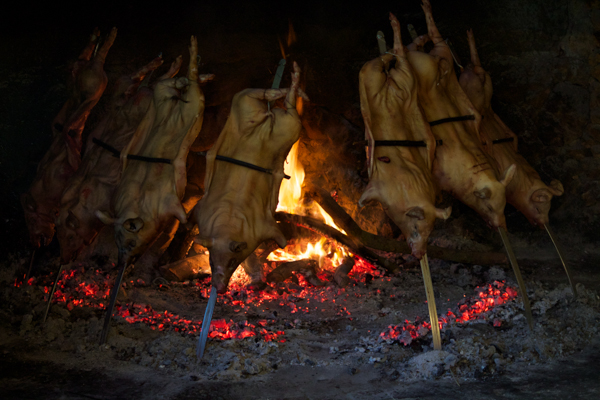
Porcetto (roast suckling pig)
Menu
Sardinian cuisine is not complicated, but it can require patience. Their cooking is comprised primarily of soups, pasta, roasted meats, and vegetables, especially artichokes. One of the most famous dishes is porcheddu / porcetto a carraxiu (spit-roasted suckling pig over a wood fire, flavoured with lardo and salt; it may be cooled in myrtle leaves to keep the meat from drying out and give it flavour). In the past, they sometimes filled the cavity inside the pig with a lamb which was removed once the pork was cooked. A more elaborate version of this dish is carrargiu, which means buried, because a wild boar, kid, lamb, turkey, or calf is stuffed with herbs and sometimes other animals and baked in a pit, lined in aromatic wood and stones, and covered with fire.
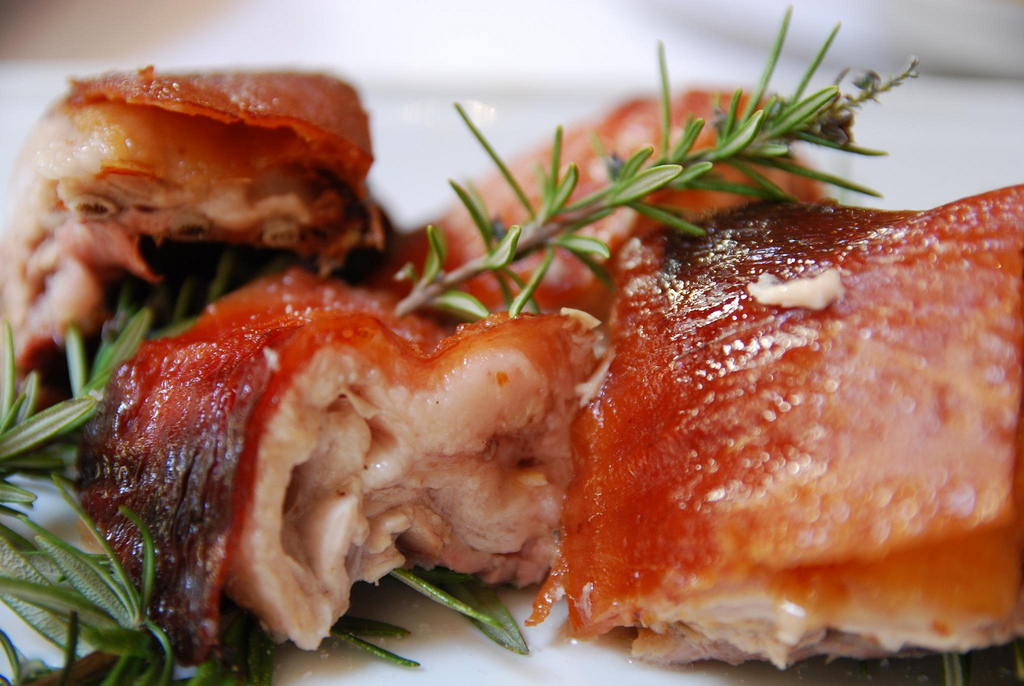
Roast suckling pig by Alpha
Other dishes include stews with wild greens and beans, fish soups, and fish, eels, and lobster simply boiled or grilled and served with extra virgin olive oil, salt, and lemon juice. For more on Sardegna‘s seafood dishes, read here.

Aragosta bollito (Rock lobster)
Sardinians prefer their desserts very sweet and many of their confections are made from sugar or honey mixed with nuts or spices and covered with icing, marzipan, or candied fruit and decorative sugar. There are many types of pastries and biscuits, sold at bakeries and from the convents.

Biscuits: Pabassinas and Amarettos
Try local white wines made from Vermentino grapes by producers such as Argiolas, Cantina Gallura, Capichera and Mura. The two best local red wines are from Carignano di Sulcis DOC and Cannonau DOC. Carignano di Sulcis DOC is considered by some to be the best red wine in Sardegna. Suggested producers include Agricola Punica, Argiolas, Cantina Santadi, Mesa, and Sardus Pater. In Cannonau DOC, try producers such as Giuseppe Gabbas, Giovanni Montisci and Tenute Soletta.
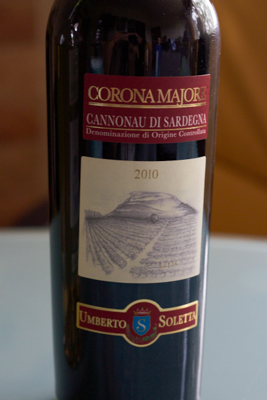
Corona Majore Cannonau di Sardegna DOC, Tenute Soletta
More relevant articles
- The cuisine of the Catalan people of Sardegna
- Sardinian cheeses
- Cellar visit: Tenute Soletta
- Traditional Sardinian food
- Northern Sardegna as a family holiday destination
What to Eat
Typical dishes from Sardegna include (the most classic dishes are written in bold; some have links to photos and/or recipes):
Pane (Bread)
Civraxiu / Chivalzu / Crivatzu (large oblong loaves of bread from durum wheat or durum wheat and semolina)
Coccoi (semolina bread made in decorative shapes for weddings and Easter)
Moddizzosu / Moddighina (a sourdough durum wheat bread which may have ricotta and potatoes added)
Pane carasau / Carta da musica (crisp flat breads sometimes brushed with olive oil and salt)
Salumi (Cold Cuts)
Salsiccia fresca (a chopped pork sausage stuffed into intestines flavoured with red wine and vinegar)
Sa supressada (a large flat pork salami with cured fat)
Testa in cassetta (pig’s head flavoured with aromatics and wine, cooked and eaten cold)
Antipasti (Starters)
Bottarga di muggine (thinly-sliced, salted, pressed grey mullet roe on white bread)
Casadinas (semolina tarts filled with ricotta or fresh cheese, sometimes with mint)
Coccois cun gerda (mint flavoured flatbread topped with ciccioli (pork scratchings) or lardo and cheese, sometimes with raisins, traditionally served when a pig is slaughtered)
Gioga minuda (boiled snails with garlic and olive oil, served with tomato sauce)
Marinette (stewed mixed vegetables (aubergine, courgette, green beans and/or potatoes) topped with grated pecorino cheese)
Merca / Mreca (boiled grey mullet preserved in zibba / salicornia (samphire))
Pecorino (slices of pecorino cheese)
Pistoccu (flatbread dressed with tomato, basil, garlic, oregano, and cheese)
Primi (First Courses)
Ambulau (barley semolina soup flavoured with onions, white wine, and vinegar)
Cassola (mixed fish and seafood soup with a sauce of onion, garlic, basil, and tomato, served with bread toasted in lard)
Caulada / Cavolata (cabbage soup with broad beans, lardo, sausage, veal, pork, garlic, wild fennel, and mint, sometimes with chilli and tomato)
Curritholata (bean soup with lardo, sausage, potatoes, and wild fennel)
Favata (broad bean soup with pork ribs, pork rind, sausage, lardo, Savoy cabbage, garlic, onions, celery, carrots, sun-dried tomatoes, and wild fennel, served with bread)
Filindua (a fine net of pasta cooked in mutton broth, served with sour cheese)
Fregula (balls of semolina pasta similar to large couscous cooked like risotto, served with tomato and pecorino cheese, sausage, kid goat or seafood including arselle (clams) and orziadas (sea anemones))
Lepudrida (soup from pork, beef, ham, lardo, onions beans, peas, and chickpeas, sometimes includes Savoy cabbage, chicory, and lettuce, served with pecorino cheese)
Maccarones a ferritus (saffron-flavoured pasta tubes, served with the juice of braised lamb or pork)
Maharrones de busa (long rolled fresh pasta with tomato sauce and pecorino cheese)
Malloreddos / Gnocchetti sardi / Malloreddu / Maccarones ciados / Ciciones alla sassarese (small saffron flavoured gnocchi dressed with tomato sauce, pork, lamb or sausage sauce, sometimes with parsley and Pecorino cheese)
Mazzamarru (soup of stale bread soaked in salt water and layered with fresh tomato sauce and pecorino cheese)
Pane frattau (lasagne made of flatbread (carta da musica) soaked in water or stock, layered with tomato sauce and Pecorino cheese and topped with a poached egg)
Pisci a collettu (dried broad bean soup with garlic, mint, and olive oil)
Spaghetti con bottarga (spaghetti pasta with shaved salted and cured mullet roe)
Spaghetti alla carllofortina (spaghetti pasta with fresh tuna)
Suppa cuatta / Suppa quatta / Zuppa gallurese / Zuppa sarda (bread layered with cheese and herbs and covered with mutton broth, sometimes with eggs or sardines)
Secondi (Main Courses)
Agnello al limone (lamb stew with onion, parsley, scrambled eggs, and lemon juice)
Agnello con pomodori secchi (lamb with onion, sun-dried tomatoes, and wild fennel)
Aragosta alla bossana (boiled rock lobster dressed with olive oil, served with hard-boiled eggs and vegetables)
Aragosta alla Catalana (rock lobster with tomatoes, peppers, onion, parsley, saffron, and brandy, traditional for Ferragosto, a day of rest on the 15th of August which has been a tradition since Roman times)
Aragosta arrosto (roast rock lobster with olive oil, lemon juice, parsley, and breadcrumbs)
Bombas (beef meatballs with garlic, parsley, eggs, and breadcrumbs, cooked in tomato sauce or broth)
Bourride (cold sliced dogfish marinated in a sauce made from its liver, walnuts, garlic, and vinegar)
Buccuni (boiled rock snails, served cold dressed with lemon and olive oil)
Calamari imbottiti / Calamari ripieni (stuffed squid with squid tentacles, bread crumbs, and garlic, sometimes with capers, olives, and anchovies)
Carrargiu (wild boar, kid goat, lamb, turkey, or calf stuffed with herbs and sometimes other animals, baked in a pit lined in aromatic wood and stones and covered with fire)
Coietas (either beef rolls with lardo, garlic and parsley, served in broth or Savoy cabbage rolls filled with meat sauce)
Cordula (spit-roasted lamb or kid tripe stuffed inside intestines and either baked with potatoes or stewed with tomatoes and peas)
Gallina con il mirto (cold boiled chicken wrapped in myrtle leaves)
Ghisadu (lamb stew with tomatoes, potatoes, onions, and red wine)
Griva (spit-roasted thrushes infused with myrtle, preserved in oil)
Lattume (the sperm sack of tuna which can be boiled or fried, dressed with oil, vinegar, lemon, and herbs)
Panada sarda (pie filled with either sun-dried tomatoes, eel, and parsley or lamb and pork with parsley, garlic, sun-dried tomatoes, and saffron)
Pecora in umido (boiled mutton with potatoes and onions, sometimes with cabbage or carrots, celery and parsley, served on carta musica with mutton broth)
Pingiada (goat, boar, beef, mutton, and pigeon stew with onion, celery, and parsley)
Porcetto a carraxiu (suckling pig roasted in a pit filled with burning aromatic wood lined with myrtle and thyme leaves)
Puddinghinus a prenu (baked chicken stuffed with chicken intestines and giblets, breadcrumbs, hard-boiled eggs, cream, and sun-dried tomatoes)
Sizzigorros (snails in tomato sauce)
Spinu (pork chops with garlic, parsley, bay leaves, white wine, black olives, and olive oil)
Taculas (cold boiled thrushes cooled in myrtle leaves)
Tonno all poroscusese (tuna stewed in red wine)
Zurrette / Brent’e sanguini (poached lamb’s blood with cheese, salt, pepper, fried cubes of lard, and bread)
Contorni (Side Dishes)
Carciofi al tegame (stewed artichoke wedges in olive oil with parsley, garlic, and sometimes, scrambled eggs)
Carciofi ripieni (artichokes stuffed with sausage, egg, breadcrumbs, and sun-dried tomatoes, poached with onions and parsley)
Cardi e uova sode (baked cardoons with cream, parsley, hard-boiled eggs, fried breadcrumbs, and lemon juice)
Cardi selvatici sott’olio / Gureau aresti cunfittau (wild cardoons preserved in oil)
Pilau (rice or fregula mixed with chopped goat meat with garlic, thyme, bay leaf, myrtle, rosemary, egg yolk, and lemon juice)
Zucchine a cassola (matchstick-cut zucchini with oil, onion, parsley, basil, and tomato sauce)
Salse (Sauces)
Mazzafrissa (cream thickened with flour – used to dress pasta, boiled broad beans, lettuce, and as a dessert with honey)
Dolci (Desserts)
Amarettos (sweet and bitter almond biscuits)
Aranzada (orange zest cooked in honey and mixed with almonds)
Bianchini (meringues topped with confetti sugar)
Biscotti di Fonni (sponge fingers)
Biscotti sardi (finger cookies flavoured with cinnamon and anise, sold in glass jars)
Bugnoletti di patate (sweet potato fritters dusted with icing sugar)
Caschettas (either wedding pastries filled with honey and hazelnuts or different pastry shapes filled with honey, almonds, saffron, and chopped citrus fruit zest, then also called tiliccas / pistiddos)
Casarecce (shortbread biscuits topped with apricot jam)
Copulettas (fine pastry filled with sponge cake, lemon zest, almonds, and lemon juice, eaten at feasts, weddings, and baptisms)
Crema catalana (flan topped with caramelised sugar, a specialty of the Catalan people of Sardegna)
Culingionis / Culurjones (deep-fried pasta filled with almonds, orange flower water, vanilla, sugar, and lemon zest)
Durke de nuke (walnut and hazelnut brittle flavoured with orange zest and honey)
Gattò / Durke de mendul (almond brittle flavoured with lemon zest)
Gesminus / Bianchini con mandorle (almond meringues)
Gueffos / Suspiros (almond cookies flavoured with lemon, coated in icing sugar and wrapped in paper)
Niuleddi (sweets made with almonds, cookies, lemon zest, honey, cinnamon, and cloves)
Pani ‘e saba (little cakes cooked with wine must or fig syrup, candied orange zest, raisins, honey, wild fennel, walnuts, almonds, and pine nuts and topped with wine must and confetti sugar or almonds)
Pescette dolci (sponge biscuits sandwiching jam)
Piricchittos / Pirikitoas (lemon glazed biscuits)
Pistiddos (tarts filled with wine must syrup, honey, citrus fruit zest, and cinnamon or wine must syrup, honey, and hazelnuts)
Pistoccheddos / Pistoccos (biscuits flavoured with lemon zest, orange blossom and honey)
Sanguinacci di maiale (pig’s blood, sugar, cinnamon anise, cooked in an intestine, sliced and fried or roasted)
Seadas / Sebadas / Sevadas (deep-fried sweet pasta filled with fresh cheese and coated in honey)
Zippulas / Cattas (fritters flavoured with orange, grappa, and saffron or mandarin – served during Carnival)
Formaggi (Cheeses)
Areste Vacca (a pleasant tasting cow’s milk cheese)
Bonassai (a soft, fatty pasteurized ewe’s milk cheese produced in the provinces of Nuoro, Sassari and Cagliari)
Callu de cabreddu (a soft, smoked raw goat’s milk cheese made in a kid goat’s stomach using the same methods since prehistoric times, eaten fresh as a spread as a starter, made in central Sardegna)
Caprino a latte cruda (a matured firm raw goat’s milk cheese smoked on rush racks over a holm-oak wood fire, produced all over Sardegna, can be eaten as a table cheese or an ingredient in cooking)
Carsu carzu (a creamy raw ewe’s milk cheese, fiore sardo, infested by maggots who change the flavour and texture of the cheese to make it creamy and tangy, from the region of Nuoro)
Casizolu (a fresh or matured, semi-firm, herbal cow’s milk cheese traditionally made by women from the milk of a semi-wild cow (razza sardo-modicana) in a region typically known for sheep and ewe’s milk cheese, from the province of Oristano)
Casu axedu (a soft raw mixed ewe’s and goat’s milk cheese either eaten fresh or brined, and then called fiscidu, and used as an ingredient in soup or ravioli filling, produced all over Sardegna)
Fresa (a fresh soft, fatty, buttery raw cow’s or ewe’s milk cream cheese, sometimes cooked in a skillet, produced in the municipalities of Bonoria, Bortigali, Bosa, Macomer and Silanus)
Gioddu (ewe’s milk yoghurt, legendarily discovered by accident by a shepherd who forgot a bucket of ewe’s milk overnight, made all over Sardegna)
Gran sardo (a firm ewe’s milk cheese which is relatively recently in production using the same technique used to make Grana Padano DOP, from the province of Sassari)
Murùtzulu / Fresa / Pischeddu / Casu de ‘acca (a semi-firm cow’s milk cheese, made in the areas around Montiferru)
Pecorino di Osilo (a semi-firm ewe’s milk cheese with an oily texture and aromatic flavour, produced in the province of Sassari)
Pecorino Romano DOP (a hard, mature ewe’s milk cheese with a customarily black plastic rind to recall that the cheese was historically massaged with oil and grease or ages as it aged giving it a black rind, produced in Lazio, Toscana and Sardegna)
Pecorino Sardo DOP (a firm ewe’s milk cheese, with a mild flavour which may also be smoked, eaten both fresh and mature as a table cheese, made throughout Sardegna)
Peretta (a soft, fresh pear shaped cow’s milk cheese formed into pear shapes, may be eaten fresh or as an ingredient for stuffing in sebada (deep-fried stuffed pasta) or ravioli, produced all over Sardegna)
Podda misto (a grainy mixed cow and ewe’s milk cheese)
Ricotta gentile / Ricotta romana (a soft, creamy, fresh ewe’s milk whey cheese, made with the left-over whey from making pecorino romano, may be eaten fresh or as an ingredient in ravioli stuffing, cakes, or other desserts, produced in the provinces of Nuoro, Cagliari, Sassari and Oristano)
Risveglio (a semi-firm, slightly sweet, aromatic ewe’s milk cheese with notes of hazelnut when mature)
Rocce sarde (a semi-cooked ewe’s milk cheese, eaten as a table cheese)
Sa vruhe (buttery fresh ewe’s milk cheese)
Semicotto caprino (a firm mixed ewe’s and goat’s milk cheese which is mild in flavour if fresh and strong in flavour if aged, made in the provinces of Nuoro and Cagliari)
Triza (a fresh cow’s milk cheese whose name comes from treccia meaning “plait” as it is made into plaits resembling Easter palms, from Montiferru)
Bevande (Drink)
Filu ‘e ferru / File e ferru / Filiferru / Abba ardente (a type of grappa aromatized with strawberry tree fruit or fennel seeds and aged in wood)
Mirto di Sardegna (myrtle berry liqueur)
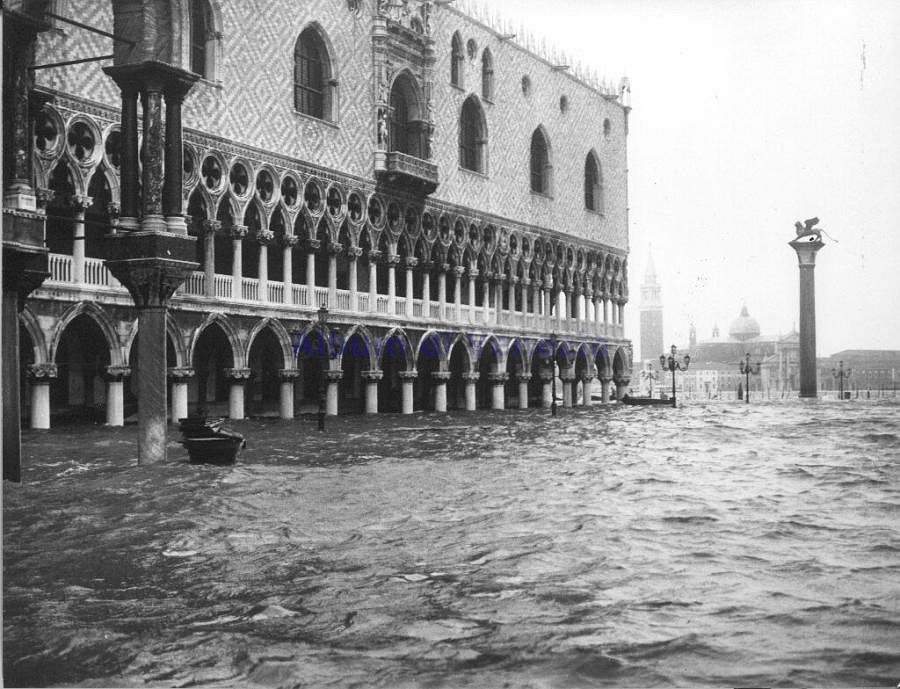
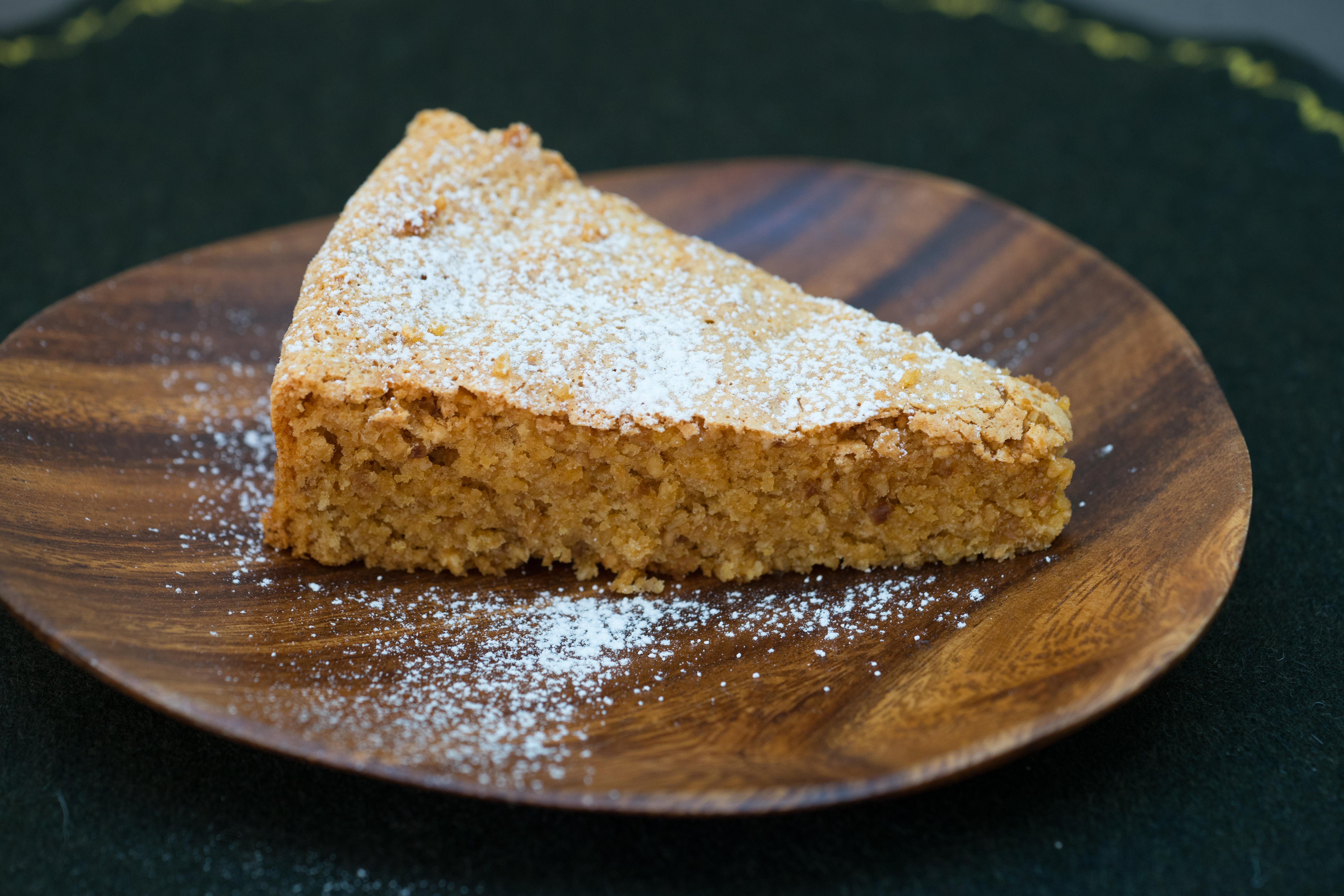
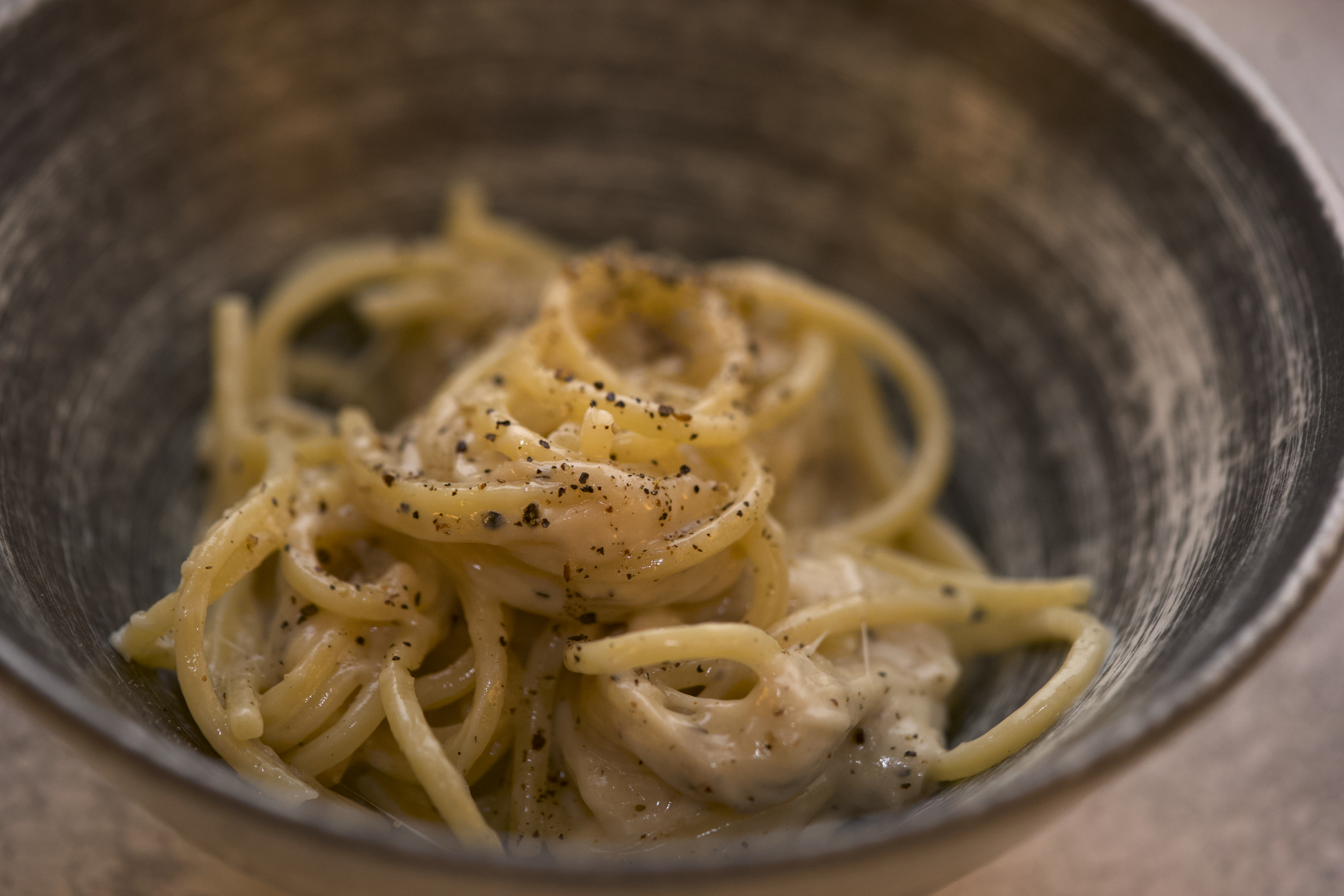
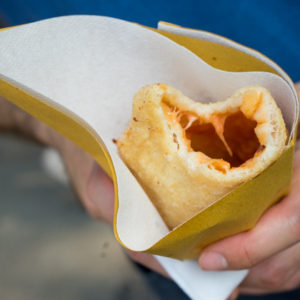
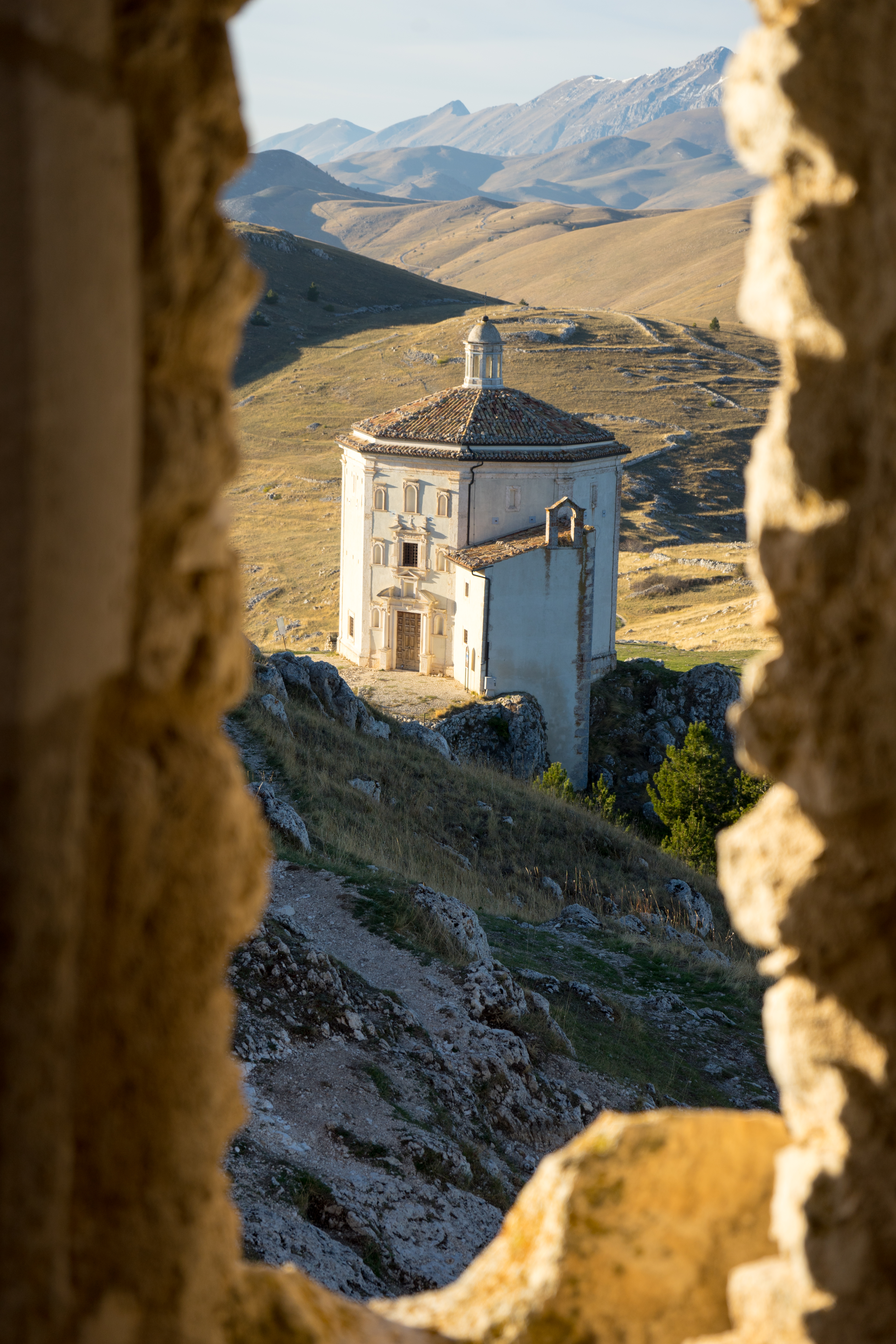
Leave a Reply